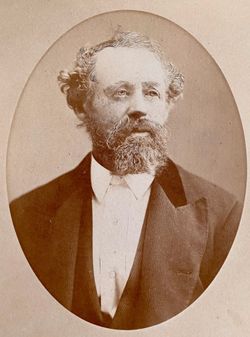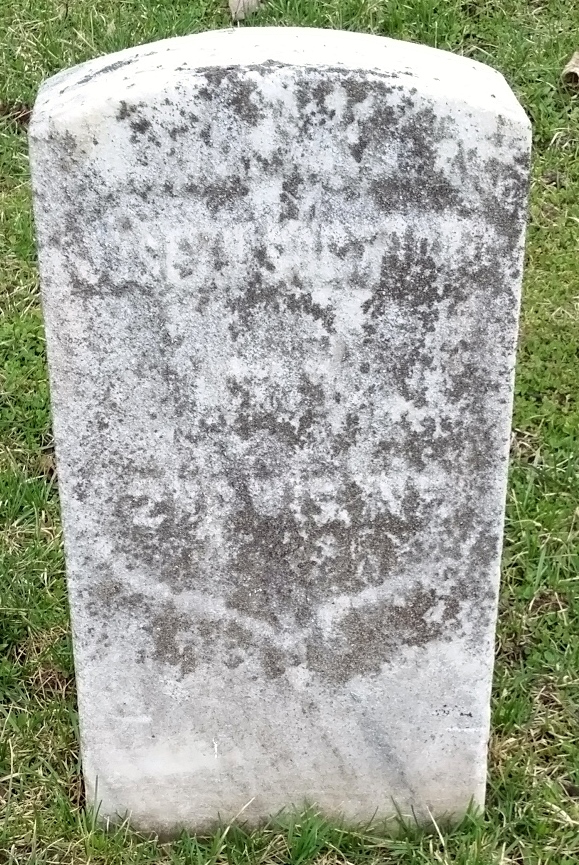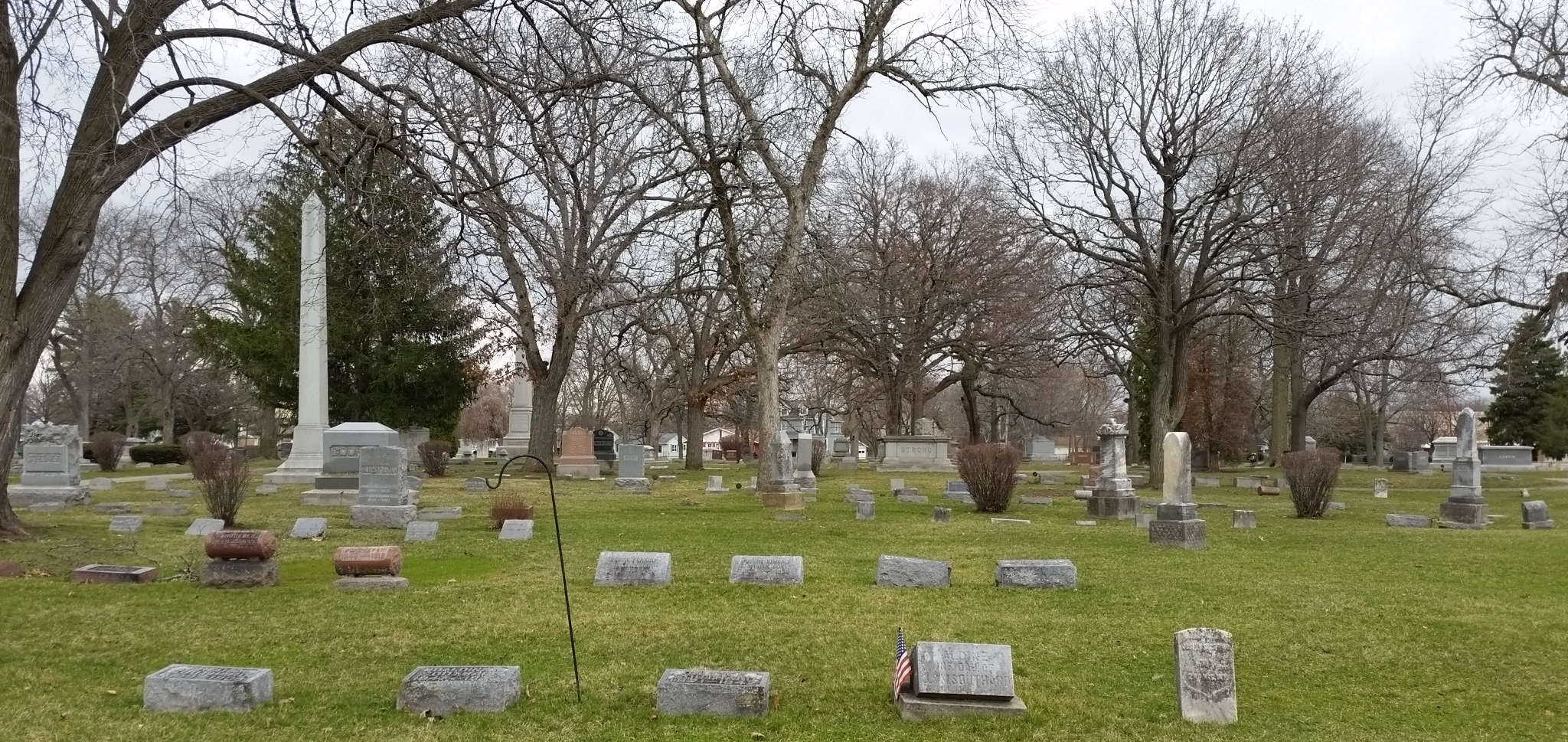Military - Civil War - POW
The Governor of Wisconsin, Alexander W. Randall (R), issued a call to arms throughout the state of Wisconsin following President Abraham Lincoln's April 15, 1861, proclamation for troops to put down the rebellion. Enough Wisconsin men enrolled to allow the formation of two regiments, one more than the single regiment quota from Lincoln's directive. The 2nd Wisconsin was primarily raised in Madison, Racine, Milwaukee, Oshkosh, and La Crosse. It assembled in Madison and was mustered into Federal service on June 11, 1861, as a three years regiment (reorganized from the original three months regiment). They were issued Harper's Ferry muskets (converted flintlock) with 40 rounds of Buck & Ball ammunition. It was the first three year regiment to arrive in Washington for the defense of the National Capitol after Lincoln issued his call for more troops to defend it. They arrived June 25 and marched through the streets 1000 strong. Three years later few were left. Their first engagement was Blackburn's Ford and First Bull Run under W T Sherman. The State had supplied them with gray uniforms, therefore they were fired upon by both sides. Despite this and their lack of experience, they gave a good accounting of themselves against Stonewall Jackson's troops and held their ground until General Joseph E. Johnston, and his last contingent of reinforcements arrived from the Valley beating them back. In the retreat which soon turned into a rout for most Union Troops the Second withdrew in good order and fought rear guard action. The Iron Brigade initially consisted of the 2nd, 6th, and 7th Wisconsin Volunteer Infantry Regiments, the 19th Indiana, Battery B of the 4th U.S. Light Artillery, and was later joined by the 24th Michigan. This composition of men from three Western states led it to be sometimes referred to as the Iron Brigade of the West. They were also known throughout the war as the Black Hats because of the black 1858 model Hardee hats issued to Army regulars, rather than the blue kepis worn in most other units.
Joslin Southard enlisted in Company D, Wisconsin 2nd Infantry Regiment on 20 Apr 1861. It spent most of the war as a member of the famous Iron Brigade of the Army of the Potomac. Joslin's 4 children were ages 14,12,10 and 7 years old at the time. He was estranged from his wife Phoebe, census records of 1860 show her living with her sister Laura and daughter Alice in Chicago, occupation sewing. (They eventually divorced) Their 3 sons are with other relatives.
The Janesville Daily Gazette (Wisconsin) July 30, 1861 lists him among solders killed, wounded or missing after battle at Manaassas Junction July 21, 1861. (Wounded and missing) He is then listed Sept. 28, 1861 as among the prisoners at Richmond. Janesville Daily Gazette January 7 1862 lists him as a prisoner in the South. " From the Richmond Enquirer, 1/3/1862 – The two hundred and forty exchanged Yankee prisoners will leave here at 4 o’clock this morning, for Fortress Monroe." The Gazette January 30, 1862 listed him as having a 30 day furlough. Mustered out on Aug 28 1862, disability. Applied for Invalid Pension, Company D 2nd Wisc. Infantry 1863.
Probate records show that his will was signed 2 days before he died. (Signature reads Joslin not Joslyn) His son Frederick and Frederick's wife Joaldine were living with him, probably caring for him. He left Frederick use of the home for 10 years after which it was to be sold and proceeds divided equally between his 4 children. The executor of the will was Charles Nye (Fred's "brother-in-law"...married to Joaldine's sister. Charles died before the 10 years were up and a second executor was appointed) The sale of Joslin's personal effects was insufficient to cover his final debts and expenses (including $50 for a casket) and a mortgage of $150 at 7% interest for 10 years was approved for the property. The property was sold at the end of the 10 years, each child receiving about $360 at the close of the estate.
Military - Civil War - POW
The Governor of Wisconsin, Alexander W. Randall (R), issued a call to arms throughout the state of Wisconsin following President Abraham Lincoln's April 15, 1861, proclamation for troops to put down the rebellion. Enough Wisconsin men enrolled to allow the formation of two regiments, one more than the single regiment quota from Lincoln's directive. The 2nd Wisconsin was primarily raised in Madison, Racine, Milwaukee, Oshkosh, and La Crosse. It assembled in Madison and was mustered into Federal service on June 11, 1861, as a three years regiment (reorganized from the original three months regiment). They were issued Harper's Ferry muskets (converted flintlock) with 40 rounds of Buck & Ball ammunition. It was the first three year regiment to arrive in Washington for the defense of the National Capitol after Lincoln issued his call for more troops to defend it. They arrived June 25 and marched through the streets 1000 strong. Three years later few were left. Their first engagement was Blackburn's Ford and First Bull Run under W T Sherman. The State had supplied them with gray uniforms, therefore they were fired upon by both sides. Despite this and their lack of experience, they gave a good accounting of themselves against Stonewall Jackson's troops and held their ground until General Joseph E. Johnston, and his last contingent of reinforcements arrived from the Valley beating them back. In the retreat which soon turned into a rout for most Union Troops the Second withdrew in good order and fought rear guard action. The Iron Brigade initially consisted of the 2nd, 6th, and 7th Wisconsin Volunteer Infantry Regiments, the 19th Indiana, Battery B of the 4th U.S. Light Artillery, and was later joined by the 24th Michigan. This composition of men from three Western states led it to be sometimes referred to as the Iron Brigade of the West. They were also known throughout the war as the Black Hats because of the black 1858 model Hardee hats issued to Army regulars, rather than the blue kepis worn in most other units.
Joslin Southard enlisted in Company D, Wisconsin 2nd Infantry Regiment on 20 Apr 1861. It spent most of the war as a member of the famous Iron Brigade of the Army of the Potomac. Joslin's 4 children were ages 14,12,10 and 7 years old at the time. He was estranged from his wife Phoebe, census records of 1860 show her living with her sister Laura and daughter Alice in Chicago, occupation sewing. (They eventually divorced) Their 3 sons are with other relatives.
The Janesville Daily Gazette (Wisconsin) July 30, 1861 lists him among solders killed, wounded or missing after battle at Manaassas Junction July 21, 1861. (Wounded and missing) He is then listed Sept. 28, 1861 as among the prisoners at Richmond. Janesville Daily Gazette January 7 1862 lists him as a prisoner in the South. " From the Richmond Enquirer, 1/3/1862 – The two hundred and forty exchanged Yankee prisoners will leave here at 4 o’clock this morning, for Fortress Monroe." The Gazette January 30, 1862 listed him as having a 30 day furlough. Mustered out on Aug 28 1862, disability. Applied for Invalid Pension, Company D 2nd Wisc. Infantry 1863.
Probate records show that his will was signed 2 days before he died. (Signature reads Joslin not Joslyn) His son Frederick and Frederick's wife Joaldine were living with him, probably caring for him. He left Frederick use of the home for 10 years after which it was to be sold and proceeds divided equally between his 4 children. The executor of the will was Charles Nye (Fred's "brother-in-law"...married to Joaldine's sister. Charles died before the 10 years were up and a second executor was appointed) The sale of Joslin's personal effects was insufficient to cover his final debts and expenses (including $50 for a casket) and a mortgage of $150 at 7% interest for 10 years was approved for the property. The property was sold at the end of the 10 years, each child receiving about $360 at the close of the estate.
Family Members
Advertisement
Explore more
Sponsored by Ancestry
Advertisement






















